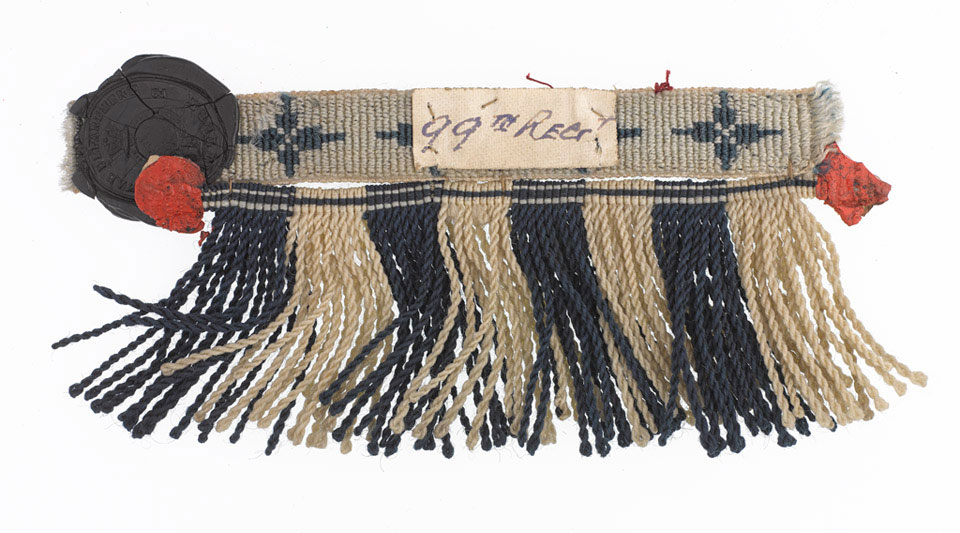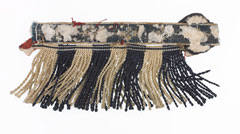
Online Collection
« Prev - 1 of 1 results - Next »
Lace and fringe sample, drummer, 99th (Lanarkshire) Regiment of Foot, sealed pattern, 1860
White worsted lace 5/8 inches in width, bearing a blue star design. 1.75 inch long fringe of twisted worsted of blue and white.
A 'sealed pattern' is a prototype of any item that the British Army issued to soldiers. It provided clothing or equipment suppliers with an example to copy.
Raised as the 99th Regiment of Foot in 1824 and the regiment received county affiliation in 1832, becoming the 99th (Lanarkshire) Regiment of Foot. Whilst serving in South Africa from 1865 to 1868, Prince Alfred, the Duke of Edinburgh, inspected the regiment as part of a tour of the colony. He was so impressed by the regiment that he granted permission to re-title the regiment as the 99th Duke of Edinburgh's (Lanarkshire) Regiment of Foot. Under the Childers Reforms of 1881, the regiment amalgamated with the 62nd (Wiltshire) Regiment of Foot to form the Duke of Edinburgh's (Wiltshire Regiment). In 1959 it amalgamated again to form the Duke of Edinburgh's Royal Regiment (Berkshire and Wiltshire), which merged with the Gloucestershire Regiment in 1994, forming the Royal Gloucestershire, Berkshire and Wiltshire Regiment. Another amalgamation with three other regiments led to the formation of The Rifles.
In 1860, when this lace and fringe sample was sealed, the regiment was serving in China.
NAM Accession Number
NAM. 1963-12-167-99
Copyright/Ownership
National Army Museum, Out of Copyright
Location
National Army Museum, Study collection
Object URL
https://collection.nam.ac.uk/detail.php?acc=1963-12-167-99


